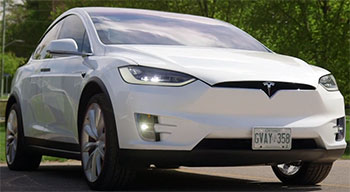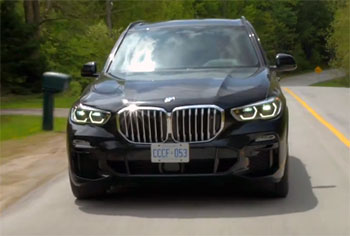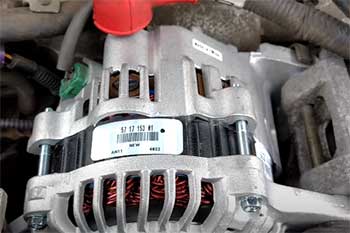I’m standing in a dealership lot, eyeing two beasts of the luxury SUV world: the BMW X5 and the Tesla Model X. Both are engineering marvels, packed with tech and style, but which one fits my life—or yours—better?
This article compares their dimensions, from length and width to cargo space and legroom, to help you decide which SUV suits your needs. With a conversational yet analytical lens, I’ll break down the pros and cons, key features, and real-world implications of their sizes, ensuring you can make an informed choice.
Comparison Table: BMW X5 vs. Tesla Model X Dimensions
| Feature | BMW X5 (2018-2022) | Tesla Model X (2015-2021) |
|---|---|---|
| Length | 193.8 in (492.2 cm) | 198.3 in (503.6 cm) |
| Width (w/o mirrors) | 78.9 in (200.4 cm) | 78.7 in (199.9 cm) |
| Width (w/ mirrors) | 87.3 in (221.8 cm) | 89.4 in (227.1 cm) |
| Height | 68.7 in (174.5 cm) | 66.3 in (168.4 cm) |
| Wheelbase | 117.1 in (297.5 cm) | 116.7 in (296.5 cm) |
| Ground Clearance | 8.4 in (21.4 cm) | 8.8 in (22.3 cm) |
| Weight | 4,706.9 lbs (2,135 kg) | 5,350.6 lbs (2,427 kg) |
| Cargo Volume (Seats Up) | 33.9 cu ft (960 l) | 12.6 cu ft (357 l) |
| Cargo Volume (Seats Down) | 72.3 cu ft (2,047 l) | 81.2 cu ft (2,300 l) |
| Front Legroom | 39.8 in | 41.1 in |
| Second-Row Legroom | 37.4 in | 38.7 in |
| Seats (Max) | 5 (7 optional) | 5 (7 optional) |
Why Dimensions Matter in Luxury SUVs
When I’m shopping for a luxury SUV, size isn’t just about bragging rights—it’s about practicality. The BMW X5 and Tesla Model X are both premium midsize SUVs, but their dimensions shape everything from parking ease to family road trips.
A longer vehicle might mean more cargo space but trickier maneuvers in tight city streets. A taller SUV could offer better ground clearance for off-road adventures but might feel less stable at high speeds.
As someone who’s navigated both urban jungles and open highways, I know these measurements aren’t just numbers—they’re the difference between a smooth ride and a logistical headache.
Let’s break down how the BMW X5 and Tesla Model X stack up in terms of exterior and interior dimensions, and what that means for you. I’ll also weigh the pros and cons of each, drawing from my own experiences and the data, to give you a clear picture of which SUV might be your perfect match.
Exterior Dimensions: Size and Presence

Length
The Tesla Model X stretches out to 198.3 inches, a solid 4.5 inches longer than the BMW X5’s 193.8 inches.
When I first parked a Model X in my driveway, it felt like a spaceship had landed—its length gives it a commanding presence but can make tight parking spots a challenge.
The X5, while still substantial, feels a bit more manageable in urban settings.
If you’re weaving through crowded city streets or squeezing into a compact garage, the X5’s shorter length might save you some stress.
Width
Width is a close call. The X5 measures 78.9 inches without mirrors, just 0.2 inches wider than the Model X’s 78.7 inches. With mirrors, the Tesla takes the lead at 89.4 inches compared to the X5’s 87.3 inches. I’ve noticed the Model X’s extra width with mirrors can make narrow lanes or parking lot squeezes feel a bit snug. If you’re navigating tight spaces often, the X5’s slightly slimmer profile could be a small but noticeable advantage.
Height
Here’s where things flip: the BMW X5 stands taller at 68.7 inches compared to the Model X’s 66.3 inches. The X5’s extra height gives it a more traditional SUV stance, which I find reassuring for off-road jaunts or snowy conditions. The Model X, with its lower profile, feels sleeker and more car-like, which might appeal if you prefer a sportier aesthetic. However, that lower height can mean less headroom for taller passengers, which I’ll cover later.
Wheelbase
The wheelbase—essentially the distance between the front and rear axles—is nearly identical, with the X5 at 117.1 inches and the Model X at 116.7 inches. This close match means both SUVs offer similar stability and ride comfort. When I drove the X5 on a long highway trip, its wheelbase contributed to a smooth, planted feel, and the Model X wasn’t far off in my test drives, though its electric powertrain added a different kind of responsiveness.
Ground Clearance
The Tesla Model X edges out with 8.8 inches of ground clearance compared to the X5’s 8.4 inches. That extra 0.4 inches might not sound like much, but when I took a Model X on a gravel trail, it handled uneven terrain with a bit more confidence than the X5. If you’re planning light off-roading or dealing with rough roads, the Model X’s slight advantage could come in handy.
Weight
The Model X is heavier at 5,350.6 pounds compared to the X5’s 4,706.9 pounds. That 14% weight difference is noticeable when accelerating or braking, especially in the Tesla’s electric powertrain, which delivers instant torque but carries more mass. The X5, being lighter, feels a bit more agile, particularly in city driving. However, the Tesla’s low center of gravity, thanks to its battery placement, helps it stay stable despite the extra heft.
Pros and Cons: Exterior Dimensions
BMW X5 Pros:
- Shorter length makes it easier to park and maneuver in tight spaces.
- Taller height offers a commanding view and better off-road capability.
- Lighter weight improves agility and fuel efficiency (for gas models).
BMW X5 Cons:
- Slightly less ground clearance may limit off-road performance.
- Narrower width with mirrors could mean less imposing road presence.
Tesla Model X Pros:
- Longer length and wider stance give it a bold, futuristic look.
- Higher ground clearance is better for light off-roading.
- Low center of gravity enhances stability despite heavier weight.
Tesla Model X Cons:
- Longer and wider dimensions can complicate parking in tight spaces.
- Lower height may feel less like a traditional SUV.
- Heavier weight can affect efficiency and handling in some scenarios.
Interior Dimensions: Comfort and Space

Cargo Space
Cargo capacity is a big deal for me, whether I’m hauling groceries or packing for a weekend getaway.
The BMW X5 offers 33.9 cubic feet of cargo space with all seats up, significantly more than the Model X’s 12.6 cubic feet.
That’s a huge difference—when I loaded up the X5 for a family trip, I fit suitcases, coolers, and more without breaking a sweat.
The Model X, however, felt cramped with just a few bags.
When you fold the second row, the Model X catches up, offering 81.2 cubic feet compared to the X5’s 72.3 cubic feet. If you’re prioritizing max cargo space for big loads, the Tesla has the edge. But for everyday use with seats up, the X5 is the clear winner.
Legroom
The Tesla Model X shines in passenger comfort. Its front legroom is 41.1 inches, beating the X5’s 39.8 inches, and its second-row legroom is 38.7 inches compared to the X5’s 37.4 inches. When I sat in the Model X’s front seat, I felt like I could stretch out forever, and my friends in the back didn’t complain either. The X5’s legroom is still generous, but taller passengers might notice the difference, especially on long drives.
Seating Capacity
Both SUVs offer a standard five-seat configuration, with an optional third row for seven passengers. The Tesla’s third row feels more like an afterthought—tight and best for kids. The X5’s optional third row is slightly roomier but still not ideal for adults. If you need regular seven-seat capacity, you might want to look at larger SUVs, but for occasional use, both work fine.
Pros and Cons: Interior Dimensions
BMW X5 Pros:
- More cargo space with seats up, ideal for daily use.
- Comfortable legroom for most passengers.
- Optional third row is slightly more usable than the Tesla’s.
BMW X5 Cons:
- Less maximum cargo space with seats folded.
- Slightly less legroom in both rows compared to the Model X.
Tesla Model X Pros:
- More legroom in front and second rows for superior passenger comfort.
- Larger maximum cargo space with seats folded, great for big hauls.
- Futuristic interior design with a massive central display.
Tesla Model X Cons:
- Limited cargo space with seats up, less practical for daily errands.
- Third row is cramped, better suited for children.
- Minimalist interior may feel less luxurious to some.
Key Features Impacted by Dimensions

BMW X5 Key Features
The X5’s dimensions complement its blend of luxury and versatility.
Its 3.0-liter TwinPower Turbo inline-six engine (in base models) delivers 335 horsepower, and the lighter weight makes it feel nimble despite its size.
The taller height and 8.4-inch ground clearance make it capable on light off-road trails, as I discovered during a weekend in the mountains.
The spacious cargo area with seats up is perfect for families or frequent shoppers, and the premium interior—think leather seats and wood trims—feels like a high-end hotel on wheels.
The X5’s slightly shorter length and width make it easier to handle in city environments, which I appreciated when navigating downtown traffic. Its adaptive suspension smooths out bumps, and the optional third row adds flexibility for larger groups, though it’s best for kids.
Tesla Model X Key Features
The Model X’s dimensions enhance its futuristic appeal. Its electric powertrain, with up to 670 horsepower in base models, delivers jaw-dropping acceleration—zero to 60 mph in 3.8 seconds, as I experienced during a test drive that left me grinning. The longer length and wider stance contribute to its bold look, complete with falcon-wing doors that turn heads but can be tricky in tight spaces.
The Model X’s low center of gravity, thanks to its battery pack, makes it surprisingly stable for its weight, and the 8.8-inch ground clearance handles rough roads well. The massive 17-inch central display controls nearly everything, which is cool but can be distracting. The extra legroom is a boon for tall passengers, but the limited cargo space with seats up was a letdown for daily use.
Read More: My Thoughts On Acura MDX Vs. Volvo XC90
Real-World Implications
Let’s talk about what these dimensions mean for you. If you’re a city dweller like me, the BMW X5’s shorter length and narrower width make it easier to park in tight spots or navigate busy streets. Its generous cargo space with seats up is a lifesaver for grocery runs or impromptu shopping trips. The taller height gives it a commanding view, which I found helpful in heavy traffic.
The Tesla Model X, with its longer and wider body, feels more at home on open highways or suburban roads. Its extra legroom is a blessing for long road trips, and the larger maximum cargo space is great for moving furniture or packing for a big vacation. However, those falcon-wing doors need space to open, which can be a hassle in crowded lots.
If you’re into light off-roading, both SUVs can handle it, but the Model X’s slightly higher ground clearance gives it a slight edge. For towing, the Tesla’s 5,000-pound capacity is impressive for an EV, while the X5’s hybrid models (like the xDrive50e) offer similar capability with the bonus of a gas engine for longer hauls.
Pros and Cons Summary
BMW X5 Overall Pros:
- Easier to maneuver in urban settings due to shorter length and width.
- More practical cargo space for daily use with seats up.
- Luxurious interior with premium materials and advanced tech.
- Versatile powertrain options, including gas, hybrid, and plug-in hybrid.
BMW X5 Overall Cons:
- Less maximum cargo space compared to the Model X.
- Slightly less legroom, which might bother taller passengers.
- Lower ground clearance limits off-road capability slightly.
Tesla Model X Overall Pros:
- Spacious legroom for front and second-row passengers.
- Larger maximum cargo space for big loads.
- Electric powertrain with instant acceleration and eco-friendly credentials.
- Futuristic design with unique features like falcon-wing doors.
Tesla Model X Overall Cons:
- Limited cargo space with seats up, less practical for daily tasks.
- Longer and wider dimensions can make parking and tight spaces challenging.
- Heavier weight impacts efficiency and handling in some scenarios.
Read More: My Thoughts On Acura MDX Vs. Lexus GX
Frequently Asked Questions (FAQ)
The BMW X5 is larger than the Tesla Model Y. The X5 measures 193.8 inches long, 78.9 inches wide, and 68.7 inches tall, with a 117.1-inch wheelbase. The Model Y is 187.0 inches long, 77.9 inches wide, and 64.0 inches tall, with a 113.8-inch wheelbase. The X5 also has more cargo space (33.9 cu ft vs. 30.2 cu ft with seats up).
The BMW X5 is similar in size to other midsize luxury SUVs like the Mercedes-Benz GLE (194.3 inches long), Audi Q7 (199.3 inches long), and Porsche Cayenne (193.7 inches long). These vehicles share comparable dimensions and target similar buyers.
The BMW X5 is slightly larger in some dimensions than the BMW iX. The X5 is 193.8 inches long and 68.7 inches tall, while the iX is 195.0 inches long but shorter at 66.8 inches. The iX offers more interior room, with 40.0 inches of front legroom and 38.8 inches in the second row, compared to the X5’s 39.8 and 37.4 inches.
The BMW X5 is smaller than the full-size Range Rover. The X5 is 193.8 inches long, 78.9 inches wide, and 68.7 inches tall. The Range Rover (2022-2023 models) is about 199.0 inches long, 80.6 inches wide, and 73.6 inches tall, with a longer 122.9-inch wheelbase, making it significantly larger.
Conclusion
Choosing between the BMW X5 and Tesla Model X comes down to what you value most in a luxury SUV. If you need a vehicle that’s easier to park, offers ample cargo space for daily errands, and blends traditional luxury with versatile powertrains, the X5 is your pick. Its dimensions make it a practical choice for urban life and family duties. If you prioritize legroom, maximum cargo capacity, and the thrill of an electric powertrain with futuristic flair, the Model X will steal your heart. Both SUVs are exceptional, but their sizes shape their strengths. Which one fits your lifestyle? Let the dimensions guide you.

